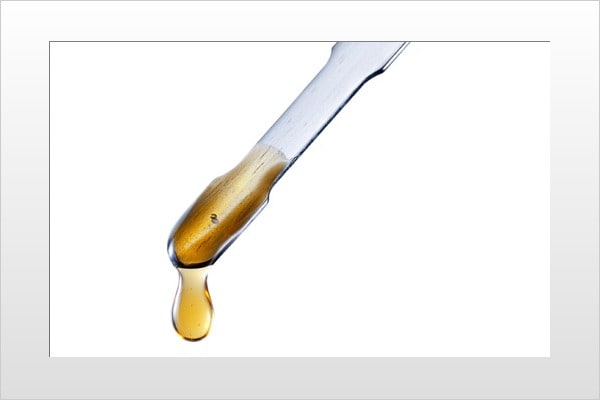For “Summary Saturday”: News, Some New, Some Old:
From me: We, here in the USA, have a lot to be grateful for, and we should give thanks.
Hospital in Syrian city barely copes with wounded.
In this Thursday, Oct. 11, 2012 photo, the bodies of two Syrian children, killed by Syrian Army shelling, lie on the street near Dar al-Shifa hospital in Aleppo, Syria. Photo: Manu Brabo / AP
ALEPPO, Syria (AP) — “The injured arrive at the hospital in taxis or in the back of pickup trucks, to the blare of car horns and shouts of "Help!"
Sometimes, they are battle-hardened rebels with gaping wounds. Sometimes, they are children, peppered with shrapnel and screaming in pain. Those who die are left on the sidewalk outside, to be claimed hours later by relatives.
The AP first visited the hospital last month and returned this week to get a fuller impression of how its staff is coping amid Syria's civil war. The routine is as simple as it is brutal: A barrage of shelling echoes over the city, and about 15 minutes later, the wounded flow in.”
More at: http://www.chron.com/news/article/Hospital-in-Syrian-city-barely-copes-with-wounded-3943587.php
_______
The 10 Best Pollution-Busting Houseplants
 “Over the years there has been quite a bit of debate about whether houseplants really can filter indoor air by removing toxins and particles. NASA tests in a spacecraft packed with plants showed markedly better air, but proving that plants are efficient filters in other situations hasn't been so easy.
“Over the years there has been quite a bit of debate about whether houseplants really can filter indoor air by removing toxins and particles. NASA tests in a spacecraft packed with plants showed markedly better air, but proving that plants are efficient filters in other situations hasn't been so easy.
But houseplants can't hurt. Not only might they take out some of the air pollution, but some think they may offer some protection against electromagnetic radiation. But which houseplants should you pick?
The New Ecologist made a list of the top 10 anti-pollutant houseplants. They rate the best as:
- The Feston Rose plant
- Devil’s Ivy
- Phalaenopsis
- English Ivy
- Parlor Ivy
- African Violets
- Christmas Cactus
- Yellow Goddess
- Garlic Vine
- Peace Lily
It was NASA, along with the Associated Landscape Contractors of America (ALCA), that conducted the classic study on the benefits of plants on indoor air, and they reported that houseplants were able to remove up to 87 percent of air toxins in 24 hours. They recommended using 15 to 18 "good-sized" houseplants in 6 to 8 inch diameter containers for an 1,800 square-foot house.” More at: http://articles.mercola.com/sites/articles/archive/2009/10/20/The-10-Best-PollutionBusting-Houseplants.aspx
_______
This is why we need the plants:
If You Knew How Dangerous Green Cleaning Products Were, You'd Probably Go Back to Soap and Water
“They're hiding under your sink, deep in the basement and out in your garage. And they pose a real threat to your health. They seem to be multiplying and most of them are green, for gosh sakes!
They are cleaning products. We have one for every conceivable job: floors, walls, dishes, laundry, windows, bathroom porcelain and ceramic tiles, wooden decks, cement surfaces, silverware, one for car paint and another for the chrome, and on and on.
And now, more and more often, I see manufacturers withholding the identities of their glycol ether solvents. For example, I have six years worth of material safety data sheets on All-Purpose Simple Green. Originally, it contained 6 percent 2-butoxyethanol which was about twice as much as many other fast cleaners did at that time. This is probably why it worked so well. Then the material safety data sheets showed the 2-butoxyethanol content had dropped to 3 percent. The latest MSDS indicates there is only about 1 percent of this glycol ether in it. But since the product cleans just as well as the original formula did, and because the MSDS now says there are other ingredients in the product that are not revealed, I have to suspect there are some of these other glycol ethers in the cleaner.
When a product cleans this fast, it ain't soap!
Whatever happened to just plain soap? Well, it seems it wasn't fast enough for our busy lives. And these new cleaners certainly are fast. Just spray and wipe or swish with a mop and the job is done
In fact, plain soap and water is a good substitute for the solvent-containing cleaners if you are willing to put a little elbow grease into the work and to rinse the soap from the surface after cleaning. But if you feel you must use a fast cleaner that can be sprayed on and wiped off in one operation, then provide some ventilation such as a window exhaust fan drawing air across your work area and exhausting it to the outside.
Remember, don't use rubber or vinyl gloves since these are quickly penetrated by the glycol ethers without changing the glove's appearance. Purchase some nitrile plastic gloves and contact the manufacturer's technical service to find out how often you should change your gloves since the glycol ethers will penetrate even these gloves in time.” More at: http://www.alternet.org/story/148963/if_you_knew_how_dangerous_green_cleaning_products_were%2C_you%27d_probably_go_back_to_soap_and_water?page=entire
----------
Beware: Most Green Cleaning Products Contain This
- “Many of the most dangerous chemicals used in household cleaning products are not required to be listed on labels.
- Even “green” cleaning products can contain powerful grease-cutting chemicals such as glycol ethers, derived from crude oil.
- Overexposure to glycol ethers can cause anemia, intoxication, and irritation of the eyes and nose. In animal studies, low level exposure has been shown to cause birth defects and damage to sperm and testicles.
- Common household items such as vinegar, baking soda, hydrogen peroxide and lemon juice can be used to clean as well, or better, than most toxic counterparts.” By Dr. Mercola
_______
Cash-Strapped Farmers Feed Candy to Cows
By CNNMoney By Aaron Smith “Cattle farmers struggling with record corn prices are feeding their cows candy instead.
“Cattle farmers struggling with record corn prices are feeding their cows candy instead.
That's right, candy. Cows are being fed chocolate bars, gummy worms, ice cream sprinkles, marshmallows, bits of hard candy and even powdered hot chocolate mix, according to cattle farmers, bovine nutritionists and commodities dealers.
"It has been a practice going on for decades and is a very good way to for producers to reduce feed cost, and to provide less expensive food for consumers," said Ki Fanning, a livestock nutritionist with Great Plains Livestock Consulting, Inc. in Eagle, Neb.
Feeding candy to cows has become a more popular practice in tandem with the rising price of corn, which has doubled since 2009, fueled by government-subsidized demand for ethanol and this year's drought. Thrifty and resourceful farmers are tapping into the obscure market for cast-off food ingredients. Cut-rate byproducts of dubious value for human consumption seem to make fine fodder for cows. While corn goes for about $315 a ton, ice-cream sprinkles can be had for as little as $160 a ton.” More at: http://www.dailyfinance.com/2012/10/10/cash-strapped-farmers-feed-candy-to-cows/?icid=maing-grid10%7Chtmlws-main-bb%7Cdl38%7Csec3_lnk1%26pLid%3D217972
---------
From me: Is that what they mean by ‘sweetmeats’? LOL
_______
Stop Changing Your Oil, Breaking the 3,000-Mile Habit
“Oil technology has changed enormously over the last 30 years making the 3,000-mile oil change unnecessary in nearly all vehicles.
Oil chemistry and engine technology have evolved tremendously in recent years, but you'd never know it from the quick-change behavior of American car owners. Driven by an outdated 3,000-mile oil change commandment, they are unnecessarily spending millions of dollars and spilling an ocean of contaminated waste oil.
After interviews with oil experts, mechanics and automakers, one thing is clear: The 3,000-mile oil change is a myth that should be laid to rest. Failing to heed the service interval in your owner's manual wastes oil and money, while compounding the environmental impact of illicit waste-oil dumping.” More at: http://www.edmunds.com/car-care/stop-changing-your-oil.html?mktcat=maintenance-article&kw=stop+changing+your+oil&mktid=ob61762858&msite=w
_______
Landmark Clean Cars Success
 “Last week marked a tremendous victory in the fight to reduce the carbon pollution that fuels global warming.
“Last week marked a tremendous victory in the fight to reduce the carbon pollution that fuels global warming.
On Tuesday, August 28th, the Obama administration finalized the Environmental Protection Agency Fuel Economy Standards that will double the fuel economy of our cars and trucks to 54.5 MGPG by 2025—an enormous step to curb carbon pollution. National Wildlife Federation supporters, staff (including our “clean-car guy” Zoe Lipman), and partners have worked for years towards this success.
Over the past two years NWF supporters have sent over 47,000 messages to the Environmental Protection Agency, the U.S. Department of Transportation, and the President in support making cars more efficient and advocating for cleaner cars to protect wildlife from global warming.”
More at: http://blog.nwf.org/2012/09/landmark-clean-cars-success/
_______
WWII Widow Finally Finds Out What Happened to her Missing Husband
 “For 60 years, Peggy Harris thought her husband was MIA during World War II. But in 2012, she discovered he was KIA… and a hero. This is one of the sweetest stories I have ever read. What kindred spirits these people across the ocean shared around this dear American Soldier. God bless them for their care and giving of themselves and for God giving his bride an answer.” Watch the full interview here
“For 60 years, Peggy Harris thought her husband was MIA during World War II. But in 2012, she discovered he was KIA… and a hero. This is one of the sweetest stories I have ever read. What kindred spirits these people across the ocean shared around this dear American Soldier. God bless them for their care and giving of themselves and for God giving his bride an answer.” Watch the full interview here
_______
On This Day:
Singer Charlie Rich protests John Denver's big win at the CMA Awards, Oct 13, 1975:
“In a 35-year career that ran from the rockabilly genius of "Lonely Weekends" (1960) to the Countrypolitan splendor of "Behind Closed Doors" (1973), the versatile and soulful Charlie Rich earned eleven #1 hits on the Country charts and one crossover smash with the #1 pop hit "The Most Beautiful Girl" (1973). The man they called the Silver Fox displayed a natural talent for pleasing many different audiences, but his non-singing performance before one particular audience in 1975 did significant damage to the remainder of his career.
On this day in 1975, the man voted Entertainer of the Year for by the Country Music Association of America one year earlier stood onstage at the CMA awards show to announce that year's winner of the Association's biggest award. But a funny thing happened when he opened the envelope and saw what was written inside. Instead of merely reading the name "John Denver" and stepping back from the podium, Charlie Rich reached into his pocket for a cigarette lighter and set the envelope on fire, right there onstage. Though the display shocked the live audience in attendance, John Denver himself was present only via satellite linkup, and he offered a gracious acceptance speech with no idea what had occurred.
In the aftermath of the incident, Charlie Rich was blacklisted from the CMA awards show for the rest of his career. But what point was he trying to make, exactly? It was widely assumed at the time that Rich was taking a stand on the side of country traditionalists upset at a notable incursion of pop dabblers into country music at the time (Olivia Newton-John, for instance, had won the Most Promising Female Vocalist award in 1973). But Rich himself was often accused of being "not country enough," so that may not have been his intent. While it made better newspaper copy to suggest that he specifically resented John Denver's win, Rich was also, by his own admission, on a combination of prescription pain medication and gin-and-tonics that night.
As his son, Charlie Rich, Jr., has written of the incident, "He used bad judgment. He was human after all. I know the last thing my father would have wanted to do was set himself up as judge of another musician."”
_______
Chilean miners are rescued after 69 days underground, Oct 13, 2010:
“On this day in 2010, the last of 33 miners trapped nearly half a mile underground for more than two months at a caved-in mine in northern Chile, are rescued. The miners survived longer than anyone else trapped underground in recorded history.
The miners’ ordeal began on August 5, 2010, when the San Jose gold and copper mine where they were working, some 500 miles north of the Chilean capital city of Santiago, collapsed. The 33 men moved to an underground emergency shelter area, where they discovered just several days’ worth of food rations. As their situation grew more desperate over the next 17 days, the miners, uncertain if anyone would find them, considered suicide and cannibalism. Then, on August 22, a drill sent by rescuers broke through to the area where the miners were located, and the men sent back up a note saying, “We are fine in the refuge, the 33.”
Food, water, letters, medicine and other supplies were soon delivered to the miners via a narrow bore hole. Video cameras were also sent down, making it possible for rescuers to see the men and the hot, humid space in which they were entombed. As engineering and mining experts from around the world collaborated on the long, complex process of devising a way to bring the 33 men up to the surface, the miners maintained a system of jobs and routines in order to keep up morale.
Rescuers eventually drilled and reinforced an escape shaft wide enough to extract the men, one by one. (Employees of a Pennsylvania-based drilling-tool company played a role in drilling the rescue shaft.) On October 12, the first of the miners was raised to the surface in a narrow, 13-foot-tall capsule painted white, blue and red, the colors of the Chilean flag. The approximately 2,000-foot ascent to the surface in the capsule took around 15 minutes for each man.
The miners were greeted by a cheering crowd that included Chile’s president, Sebastian Pinera; media from around the world; and friends and relatives, many of whom had been camped at the base of the mine in the Atacama Desert for months. Millions of people around the globe watched the rescue on live TV. Less than 24 hours after the operation began, all 33 of the miners, who ranged in age from 19 to 63, had been safely rescued. Almost all the men were in good health, and each of them sported dark glasses to protect their eyes after being in a dimly lit space for so long.
The rescued miners were later honored with trips to a variety of destinations, including England, Israel and Florida’s Walt Disney World, where a parade was held in their honor.”
_______
Yesterday:
‘Prissy’ (“For the female pet who is a prissy fussy little princess.”), the tiny kitten, is still a stubborn little thing. It takes quite a while to get her settled. She has gained 2 ounces, but sometimes she wants her bottle, and sometimes she just flails and thrashes her minuscule arms around and doesn’t know what she wants. Maybe she is teething. I will be so glad when she is old enough to eat out of a bowl. I’ve never raised a kitten like this one!
Misty and I went to get Jay, who brought his blower here with him. He blew the pine needles off the roof. Then he blew my pathway, and Ray’s pathway on the side of the guest house. (Ray can’t do it, as he is still going to Physical Therapy, but today, after an MRI, ‘they’ decided that PT wasn’t what was needed.)
I raked the pine needles up into heaps to go on to the burn pile. Jay wanted to light it, but I saw our neighbor’s flag flapping in the wind, so it was not a good burn day.


![images[5] images[5]](https://blogger.googleusercontent.com/img/b/R29vZ2xl/AVvXsEiFY3IIICJl4Fc93OkPH9elfBC56Dq6Oi2BN1vCz6UZDEsLPTDFvmK_9CvdMHGI75oKFB8XZnGR2diR3DF8qAfF8EZLJipK-1wCz2fVPAzv3zENiOorjRkQv0KWn0yaFeqBwAakfQpF3dmd/?imgmax=800)















1 comment:
Seems like the wind died down today so maybe you can burn today.
Post a Comment